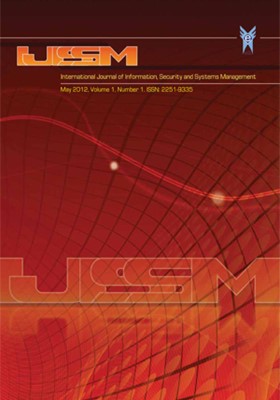-
-
List of Articles
-
Open Access Article
1 - The Presentation of a Mathematical Model to Assess and Control the Inventory Control System through ABC Analysis Approach (A Case Study of Lino Meat Products Company)
Mohammad Reza Motadel Abbas Toloie Eshlagy Sarvenaz Ghasemi -
Open Access Article
2 - Information Security Requirements for Implementing Electronic Health Records in Iran
Amir Ashkan Nasiripour Somayeh Hamzeh Sina Golesorkhi -
Open Access Article
3 - Exploring the Type of Relationship between Information Security Management and Organizational Culture (Case Study in TAM Iran Khodro Co.)
Alireza Pour Ebrahimi Payvand Fartash Naini -
Open Access Article
4 - Role of New Technologies in Medical Continual Training
Mahmoud Pashaee Rahim Modabberi Kalyani Mohsen Sheikh Zadeh Marand -
Open Access Article
5 - Feasibility of Electronic Commerce at Cooperative in Gilan Province to Select an Appropriate E-Commerce Model by Using Fuzzy Analysis Network Process
Mohammad Reza Motadel Reza Radfar Marjan Babaie
-
The rights to this website are owned by the Raimag Press Management System.
Copyright © 2021-2025







